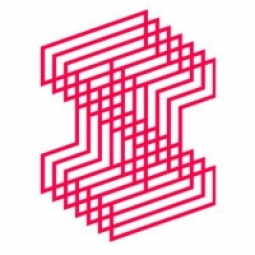下载PDF
Revitalizing Starbucks' Red Cup Campaign: A Case Study
适用行业
- 食品与饮料
适用功能
- 销售与市场营销
挑战
尽管红杯是节日的象征,但市场上的竞争对手也纷纷效仿,推出了自己的“圣诞杯”和一系列节日饮品……结果是,节日期间的竞争比以往任何时候都更加激烈。我们需要提醒消费者,星巴克是节日咖啡和原创红杯的创造者。以至于他们走过科斯塔,走进星巴克,吸引了人们的关注和客流量。关于品牌过早标记节日开始的问题一直存在争议。有些人喜欢它,而另一些人则对此嗤之以鼻。我们希望融入这种紧张气氛,以一种半开玩笑、自我意识和幽默的方式庆祝星巴克红杯(以及与之一起推出的节日饮品)的推出,让超级粉丝兴奋不已,并在其中扬起清爽的微笑。有抱负的千禧一代。
关于客户
星巴克是本案例研究中的客户。他们是一个著名的咖啡品牌,希望提醒消费者他们作为节日咖啡和原创红杯创造者的地位。此次活动的目标受众是超级粉丝和有抱负的千禧一代。
解决方案
为了提醒消费者星巴克是节日咖啡和原创红杯的创造者,品牌决定借势紧张,以半开玩笑、自知之明、幽默的方式庆祝星巴克红杯的上市方式。重点是人际关系,而不仅仅是产品。整个 11 月,在 EMEA 各个市场的视频点播、YouTube 和社交媒体平台上推出了首发影片和删减内容。
相关案例.

Case Study
The Kellogg Company
Kellogg keeps a close eye on its trade spend, analyzing large volumes of data and running complex simulations to predict which promotional activities will be the most effective. Kellogg needed to decrease the trade spend but its traditional relational database on premises could not keep up with the pace of demand.

Case Study
HEINEKEN Uses the Cloud to Reach 10.5 Million Consumers
For 2012 campaign, the Bond promotion, it planned to launch the campaign at the same time everywhere on the planet. That created unprecedented challenges for HEINEKEN—nowhere more so than in its technology operation. The primary digital content for the campaign was a 100-megabyte movie that had to play flawlessly for millions of viewers worldwide. After all, Bond never fails. No one was going to tolerate a technology failure that might bruise his brand.Previously, HEINEKEN had supported digital media at its outsourced datacenter. But that datacenter lacked the computing resources HEINEKEN needed, and building them—especially to support peak traffic that would total millions of simultaneous hits—would have been both time-consuming and expensive. Nor would it have provided the geographic reach that HEINEKEN needed to minimize latency worldwide.

Case Study
Energy Management System at Sugar Industry
The company wanted to use the information from the system to claim under the renewable energy certificate scheme. The benefit to the company under the renewable energy certificates is Rs 75 million a year. To enable the above, an end-to-end solution for load monitoring, consumption monitoring, online data monitoring, automatic meter data acquisition which can be exported to SAP and other applications is required.

Case Study
Coca Cola Swaziland Conco Case Study
Coco Cola Swaziland, South Africa would like to find a solution that would enable the following results: - Reduce energy consumption by 20% in one year. - Formulate a series of strategic initiatives that would enlist the commitment of corporate management and create employee awareness while helping meet departmental targets and investing in tools that assist with energy management. - Formulate a series of tactical initiatives that would optimize energy usage on the shop floor. These would include charging forklifts and running cold rooms only during off-peak periods, running the dust extractors only during working hours and basing lights and air-conditioning on someone’s presence. - Increase visibility into the factory and other processes. - Enable limited, non-intrusive control functions for certain processes.

Case Study
Temperature Monitoring for Restaurant Food Storage
When it came to implementing a solution, Mr. Nesbitt had an idea of what functionality that he wanted. Although not mandated by Health Canada, Mr. Nesbitt wanted to ensure quality control issues met the highest possible standards as part of his commitment to top-of-class food services. This wish list included an easy-to use temperature-monitoring system that could provide a visible display of the temperatures of all of his refrigerators and freezers, including historical information so that he could review the performance of his equipment. It also had to provide alert notification (but email alerts and SMS text message alerts) to alert key staff in the event that a cooling system was exceeding pre-set warning limits.

Case Study
Coca-Cola Refreshments, U.S.
Coca-Cola Refreshments owns and manages Coca-Cola branded refrigerators in retail establishments. Legacy systems were used to locate equipment information by logging onto multiple servers which took up to 8 hours to update information on 30-40 units. The company had no overall visibility into equipment status or maintenance history.





